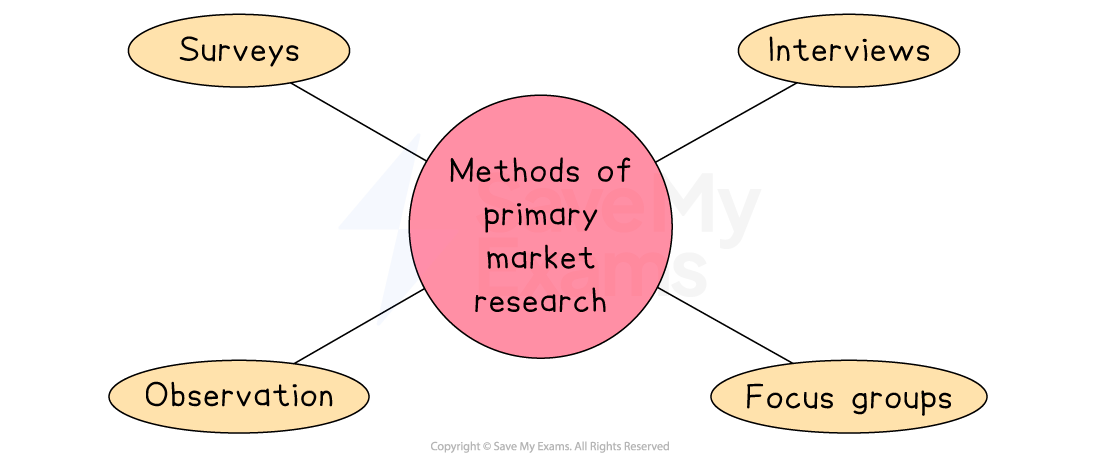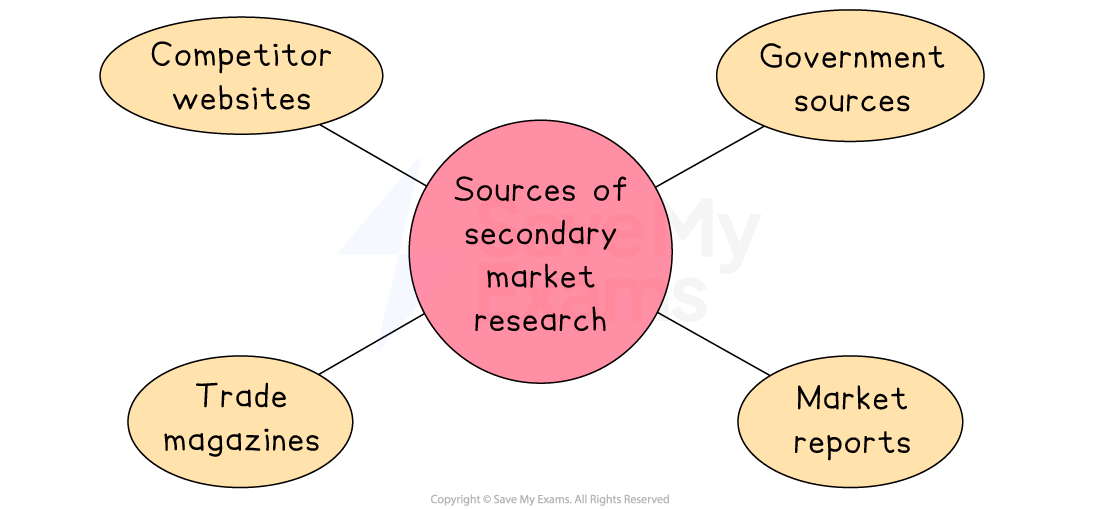Syllabus Edition
First teaching 2025
First exams 2027
Methods of Market Research (Cambridge (CIE) IGCSE Business): Revision Note
Exam code: 0450, 0986 & 0264, 0774
Why do businesses use market research?
Market research is the collection, compilation and analysis of information about a market
Effective market research helps a business
Reduce risk when launching new products or entering new markets
Identify and understand the future needs and wants of customers
Understand consumer behaviour
Identify how much consumers are prepared to pay
Identify potential gaps in the market which can be exploited to increase sales
Identify competitors and gauge their potential strengths and weaknesses
With effective market research businesses are well-placed to make informed decisions about the most effective way to use their valuable resources and develop a suitable marketing mix
On-going market research helps businesses to update their marketing strategy in line with customers' changing needs and preferences
Primary market research
Primary market research is the process of gathering information directly from consumers in the target market
This process gathers information that does not already exist and is specific to the needs of the business collecting it
Surveys, interviews and focus groups are common primary market research methods
These methods make use of questionnaires to organise research questions and responses

Primary market research methods
Surveys
A series of questions are posed to a defined number of people using a questionnaire
Surveys can be conducted face-to-face, online, by phone or by post
Advantages | Disadvantages |
|---|---|
|
|
Interviews
A formal meeting between a researcher and a customer using structured or semi-structured questions
Interviews allow detailed responses and observation of body language
Advantages | Disadvantages |
|---|---|
|
|
Observation
A market researcher watches consumer behaviour in real time, such as shopping patterns, product placement, or packaging influence
Advantages | Disadvantages |
|---|---|
|
|
Focus groups
Small group discussions led by a specialist to gather detailed feedback from target customers on products, services, or marketing strategies
Advantages | Disadvantages |
|---|---|
|
|
Sampling
Primary market research is conducted with a small representative sample of the market as a whole
Market researchers use carefully designed sampling methods from which accurate conclusions can be drawn about likely customer preferences and behaviour
In general, the larger the sample size, the more likely it is that results of market research activities will reflect the market as a whole
Why is sampling useful?
It saves time and money
It is usually too expensive and time-consuming to collect data from every potential customer
Sampling allows the business to get useful information quickly and at a lower cost
It can provides reliable insights
If the sample is chosen carefully, it can represent the larger market
This means the business can still learn about customer preferences, buying habits, or opinions without needing to ask everyone
It helps a business make better decisions
Sampling allows a business to test ideas, such as new products or adverts, before launching on a larger scale
This helps reduce risk
It is useful for identifying trends
By asking a smaller group of people from different segments, a business can spot patterns in customer behaviour or preferences
Secondary market research
Secondary research involves the collection, compilation, and analysis of data that already exists
It helps businesses make informed decisions without carrying out their own primary market research
Businesses must weigh up the reliability of secondary market research and aspects such as cost, relevance and availability of data when making a decision on which secondary data to use

Sources of secondary market research
Competitor websites
Businesses can visit the websites of their competitors to gather useful information about their products, pricing, promotions, customer service and branding
Why are they useful?
Comparing prices and features
Identifying current marketing strategies
Understanding how competitors position themselves in the market
Government sources
Governments publish a wide range of free and reliable data, including statistics on population, employment, income, business activity and economic growth
Why are they useful?
Spotting demographic trends (e.g. ageing population)
Analysing the economic climate (e.g. inflation, interest rates)
Understanding changes in consumer spending or regional business conditions
Market reports
Market research companies, such as Mintel or Euromonitor, produce in-depth reports on industries, consumer trends and market performance
These are usually detailed and may be expensive to access
Why are they useful?
Assessing market size and growth
Understanding consumer behaviour and preferences
Identifying future opportunities or threats in a market
Trade magazines
Magazines focused on a specific industry, often published by trade associations or business groups
They include news, expert opinions and case studies
Why are they useful?
Staying up-to-date on trends, new products, and innovations
Monitoring competitor activity within the industry
Gaining insight into best practices and future developments
Evaluating secondary market research
Advantages | Disadvantages |
|---|---|
|
|
Examiner Tips and Tricks
Be careful not to confuse primary and secondary research – primary gathers new data (e.g. surveys), while secondary uses existing data (e.g. reports). Mixing these up is a common exam mistake
Factors influencing the accuracy of market research data
The reliability and accuracy of market research depends upon a large number of factors, including:
1. Question phrasing
How questions are phrased in questionnaires or other tools used to conduct surveys
Questions should be written in such a way that they do not encourage a predetermined response
2. Sample selection
How carefully the sample is selected
Including its size, types of respondent chosen and how closely these reflect the intended target market
3. Skills of interviewer
Who conducts the research including their experience, research skills and source (primary or secondary?)
Potential for bias when conducting research or analysing results
The research and its analysis should be as objective as possible
4. Time and place of research
When and where the research is conducted
Customer tastes, fashions, economic conditions and technology change, giving data a relatively short period of usefulness
Customers in different geographic areas can have very different opinions

Unlock more, it's free!
Did this page help you?